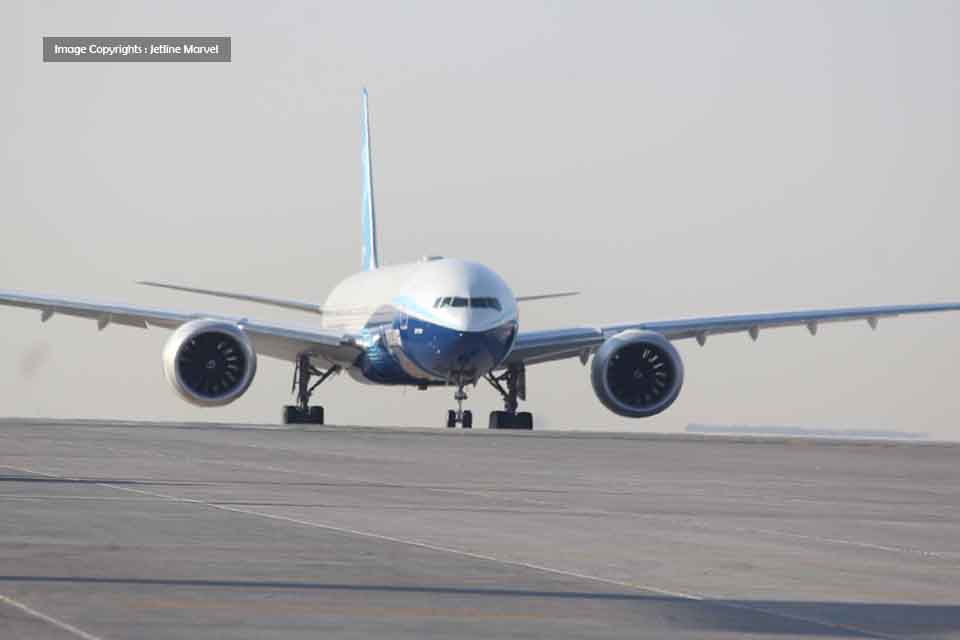Aerospace
Boeing updated its 2022 financial reports and its long-term goals.

Boeing is presently gradually stabilizing after encountering headwinds from the business. produced $3.1 billion in free cash flow in addition to $3.5 billion in operating cash flow. and revised the total orders and deliveries made between January and December 2022.
The 737 program is stabilizing the production rate at 31 per month with plans to ramp production to approximately 50 per month in the 2025/2026 timeframe. Additionally, the 787 program continues at a low production rate with plans to ramp production to five per month in late 2023 and to 10 per month in the 2025/2026 timeframe.
During the quarter, the company secured net orders for 376 aircraft, including an order from United Airlines for 100 737 MAX and 100 787 airplanes. Commercial Airplanes delivered 152 airplanes during the quarter and the backlog included over 4,500 airplanes valued at $330 billion.
Defense, Space & Security’s fourth-quarter revenue was $6.2 billion. Fourth-quarter operating margin of 1.8 percent reflects the continued operational impact of labor instability and supply chain disruption.
Defense, Space & Security delivered 45 aircraft and three satellites, including the first P-8A Poseidon to New Zealand. Also in the quarter, the Boeing-built Space Launch System core stage powered the first Artemis I mission to the moon and the T-7A program completed engine testing.
During the quarter, Defense, Space & Security captured awards from Japan for two KC-46A Tankers and from the Egyptian Air Force for 12 CH-47F Chinook helicopters. The backlog at Defense, Space & Security was $54 billion, of which 28 percent represents orders from customers outside the U.S.
Global Services’ fourth-quarter revenue of $4.6 billion and operating margin of 13.9 percent reflect higher commercial volume, partially offset by lower government volume.
During the quarter, Global Services finalized the U.S. Air Force F-15 depot support order and opened the Germany Distribution Center to serve 6,000+ customers with chemicals and specialty materials.
At quarter-end, Boeing Capital’s net portfolio balance was $1.5 billion. The increase in loss from other unallocated items and eliminations was driven by the timing of allocations, share-based compensation and deferred compensation expense. The change in other income was primarily due to increased interest rates driving increased investment income. The fourth quarter effective tax rate primarily reflects tax expense driven by an increase in the valuation allowance.
Fourth Quarter 2022
- Generated $3.5 billion of operating cash flow and $3.1 billion of free cash flow (non-GAAP); cash and marketable securities of $17.2 billion
- Certification efforts continue on 737-7 and 737-10
- Delivered 152 commercial airplanes and recorded 376 net orders
The full Year 2022
- Generated $3.5 billion of operating cash flow and $2.3 billion of free cash flow (non-GAAP)
- Delivered 480 commercial airplanes and recorded 808 net orders
- Total company backlog grew to $404 billion; including over 4,500 commercial airplanes
Outlook for 2023
- Reaffirming guidance: $4.5–$6.5 billion of operating cash flow and $3.0–$5.0 billion free cash flow (non-GAAP)

Aerospace
Boeing Transfers Rocket Stage to NASA, Paving Way for Human Moon Mission

Boeing has achieved a significant milestone by providing NASA with the second core stage of the Space Launch System (SLS) rocket.
This crucial component, crafted at NASA’s Michoud Assembly Facility (MAF), is set to propel the Artemis II crew into lunar orbit, marking humanity’s return to deep space after a 50-year hiatus.
The monumental Boeing-built rocket stage, the largest element of the Artemis II mission, will embark on a journey aboard the Pegasus barge, traveling 900 miles to NASA’s Kennedy Space Center.
Comparison of two legendary aircraft B777x vs B747 aircraft:Click here
Upon arrival, it will be meticulously integrated with other essential Artemis II components, including the upper stage, solid rocket boosters, and NASA’s Orion spacecraft within the iconic Vehicle Assembly Building. This intricate integration process is a vital step toward the eagerly anticipated Artemis II launch, slated for 2025.
“Boeing-built products helped land humankind on the moon in 1969, and we’re proud to continue that legacy through the Artemis generation,” remarked Dave Dutcher, vice president and program manager for Boeing’s SLS program. “Together, with NASA and our industry partners and suppliers, we are building the world’s most capable rocket and paving the way to deep space through America’s rocket factory in New Orleans.”
NASA, Lockheed Martin Reveal X-59 Quiet Supersonic Aircraft:Click here
The delivery of Core Stage 2 marks a significant achievement in the evolution of the SLS rocket. Towering over 200 feet and powered by four RS-25 engines, this core stage, coupled with two solid-fueled booster rockets, will generate a staggering 8.8 million pounds of thrust. This immense power is crucial to launching Artemis II and future missions into the vast expanse of space.
The SLS rocket stands unparalleled in its capability to transport both crew and substantial cargo to the moon and beyond in a single launch. Its extraordinary capacity will facilitate the delivery of human-rated spacecraft, habitats, and scientific missions to destinations including the moon and Mars, ushering in a new era of space exploration.
-

 Travel1 week ago
Travel1 week agoAir India to Expand US Operations with Three New Routes After a Decade
-

 Travel2 weeks ago
Travel2 weeks agoWhy We Should Avoid These Stamps in a Passport
-

 Airlines1 month ago
Airlines1 month agoInvestigations Reveal Fake Chinese Titanium in Boeing and Airbus Jets
-

 Tech4 weeks ago
Tech4 weeks agoChina’s CATL Plans 1,800-Mile Electric Plane Launch by 2027
-

 Airport3 days ago
Airport3 days agoTop 10 Largest Airports in the World by Size
-

 Aerospace4 weeks ago
Aerospace4 weeks agoChina’s Fighter Jets Turn Wings into Autonomous Drones
-

 Airlines4 days ago
Airlines4 days agoAir India Rolls Out A350s for Delhi-New York JFK and Newark Routes
-

 Defence3 weeks ago
Defence3 weeks agoBoeing Enhances Chinook with New Engines and Block II Upgrades at $96 Million







